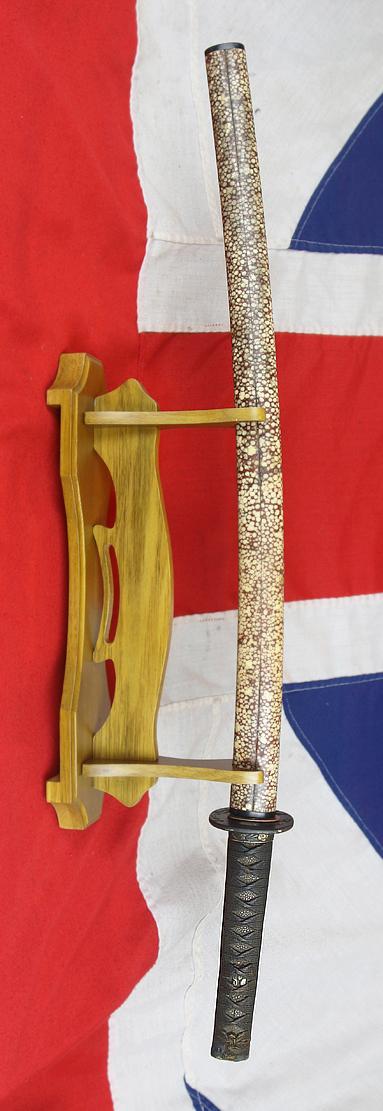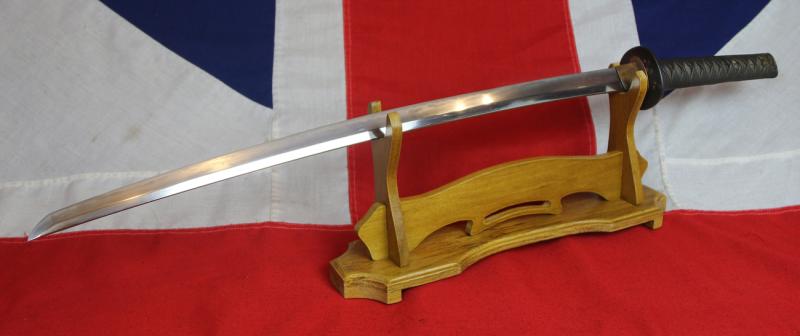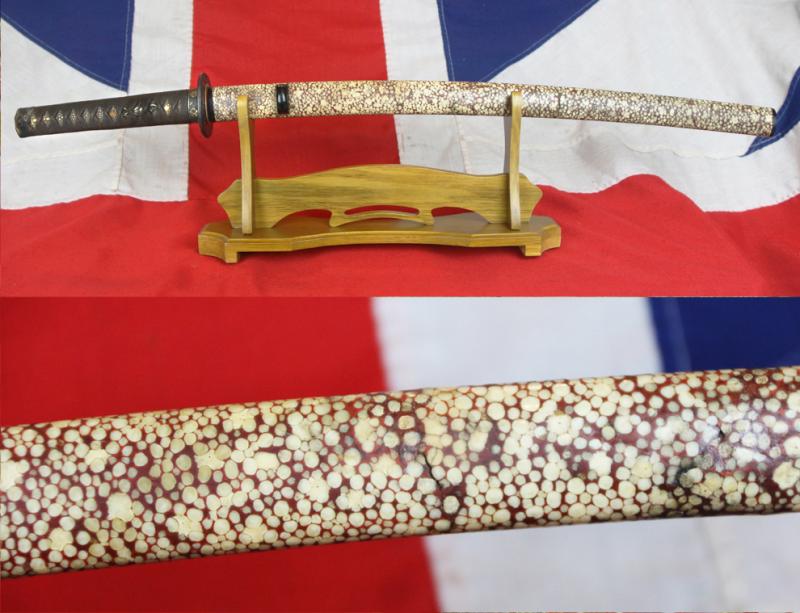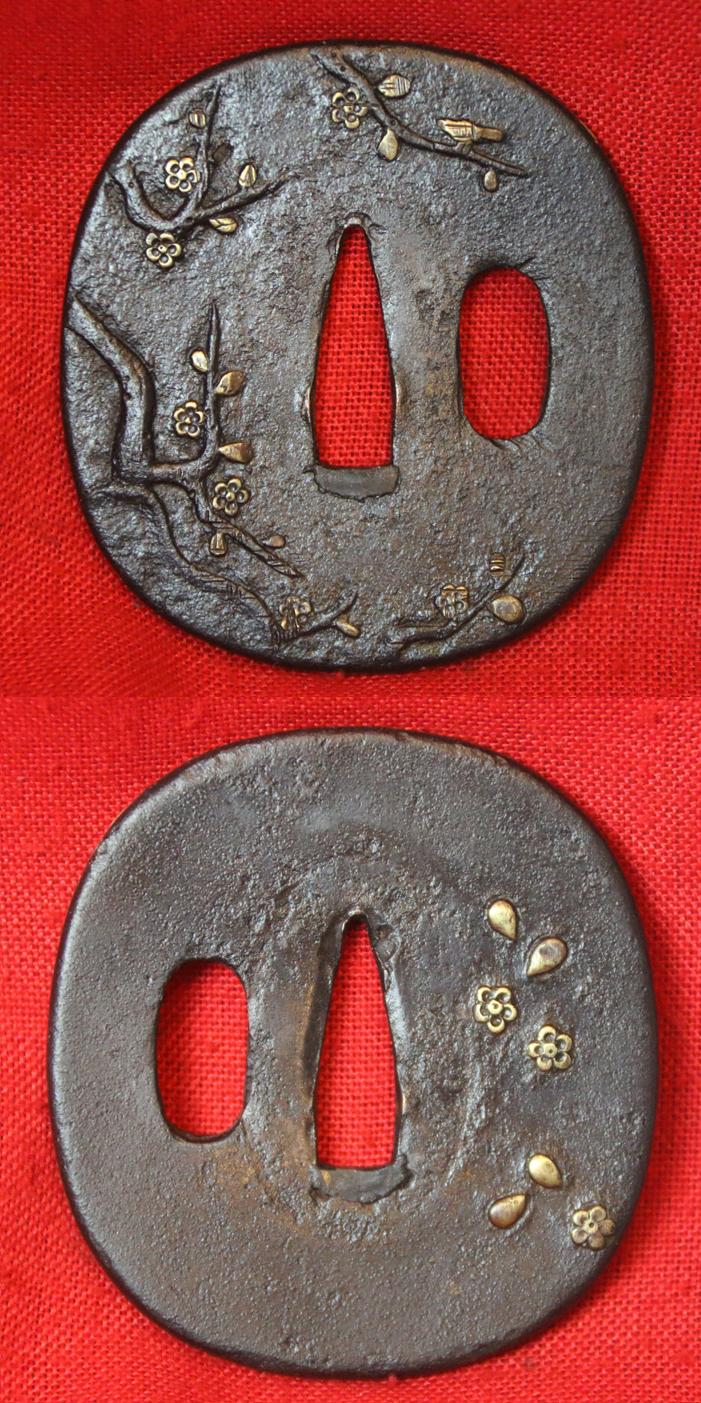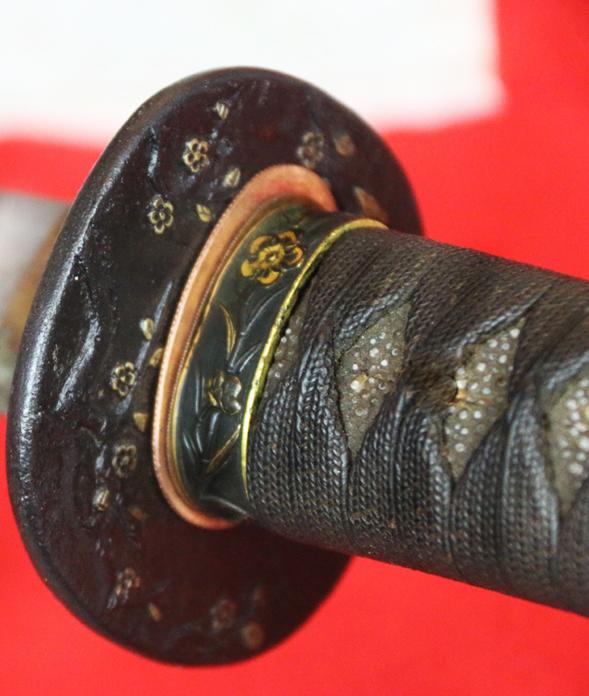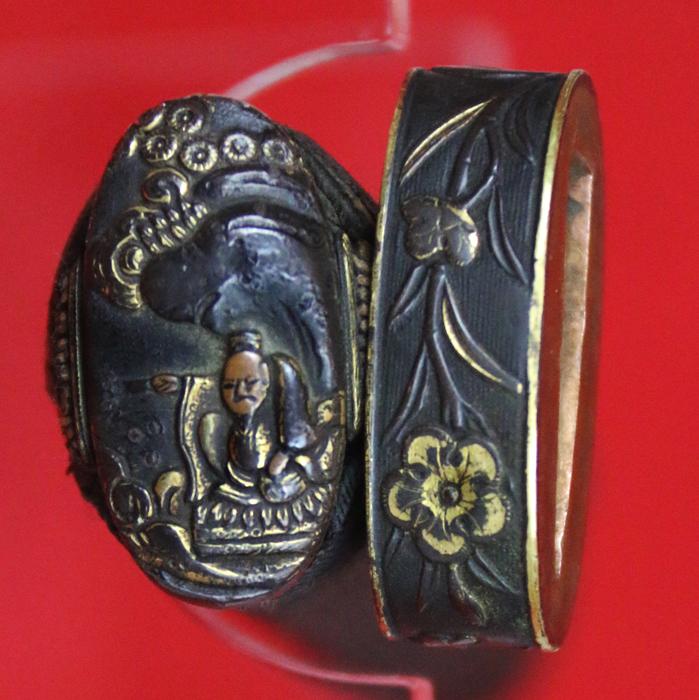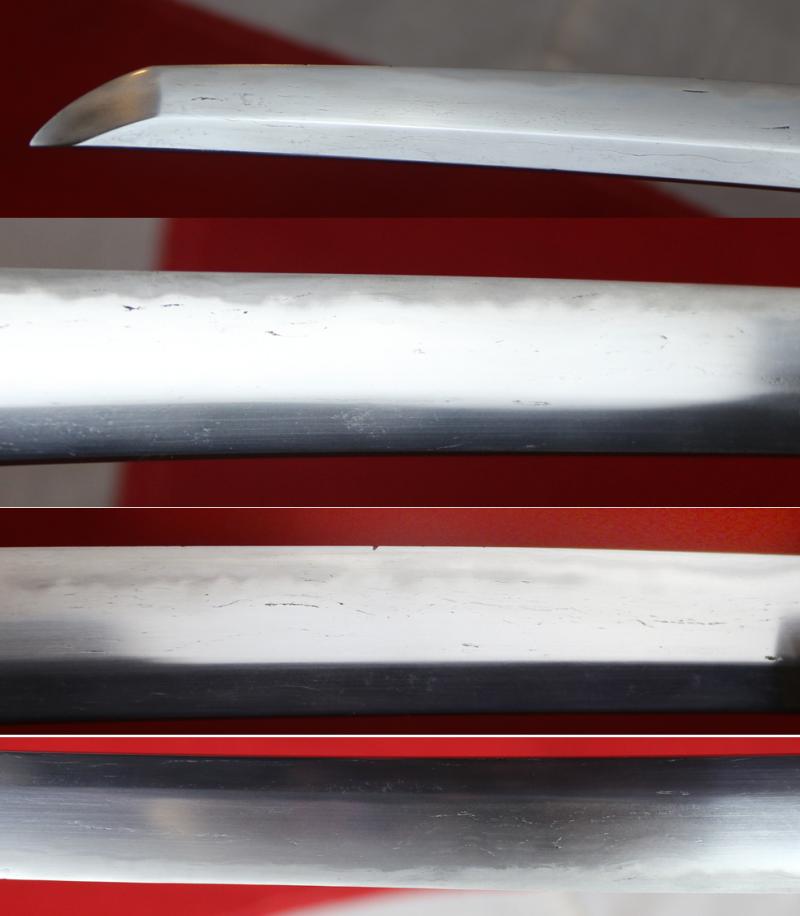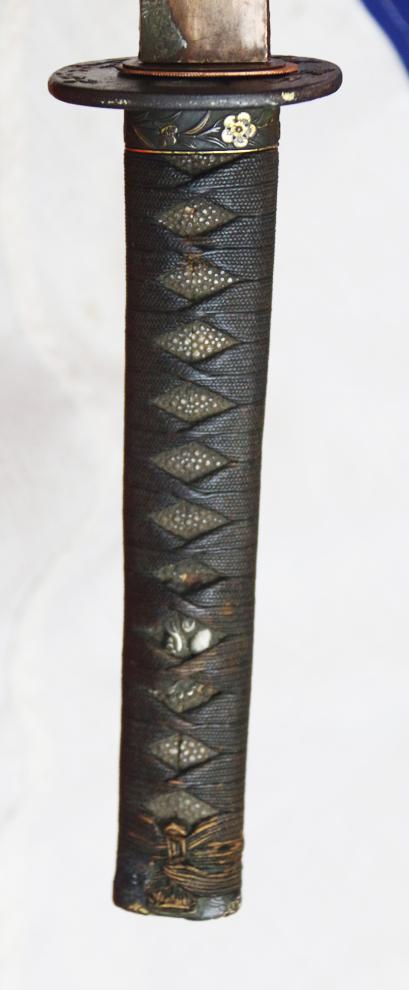A Superbly Beautiful Ancient, Early Nagamitsu, Signed Katana Around 700 years Old. With Rare, Red Kairagi Polished Samegawa Saya
Nagamitsu is one of the most famous names in the history of Japanese swords. There have been various swordsmiths named Nagamitsu who worked from the mid 1200's through the 1940's. The most famous of them worked in Bizen, although swordsmiths by this name are recorded as having worked in Satsuma, Yamato, Yamashiro and other locations. This is by one of the Nagamitsu in the 1300’s. To place this beautiful ancient sword in its historical context, when this sword was made, and being used by, maybe it’s third or even fourth samurai owner in Japan, in Europe, Edward, The Black Prince, was fighting the French at Poitiers under the command of his father, King Edward IIIrd. And there is likely not a single European medieval sword blade, in all the state collections in Europe, of the same age, in as good a condition as this sword’s blade, even the few surviving swords of kings. This visually demonstrates, in the simplest way, just how wondrous surviving ancient samurai swords are.
All original Edo period mounts, a suite of matching tsuba, fuchi and kashira in shakudo and gold depicting a seated takebori sage on a lotus with prunus blossom, the tsuba is iron and gold takebori also of matching prunus blossom branches, the original Edo saya is polished two tone red kairagi coloured giant rayskin. "Kairagi" means "Ume Blossom Skin".
When you polish the skin, Ume Blossom patterns will appear. Kairagi-same is very rare, but red ground kairagi especially so.
The tsuka hilt has all its original antique Edo period tsuka-Ito binding over the samegawa giant rayskin with a pair of delightful silver, botanical themed menuki the hilt’s grip ornaments within the binding. The beautiful ancient blade is a typical of the Koto period, with the usual style of the era, including a relatively narrow, undulating hamon running parallel and down to the edge towards and at the kissaki curved tip, with a most charming funbari graduated curvature. The tang bears the two kanji signature of the smith, Nagamitsu, that despite its great age is still nicely visible. It is a beautiful blade of very light and elegant balance, perfect for two handed sword combat.
The great samurai warrior Musashi, who was a famous exponant of two handed sword fighting and used two swords just as this one. Miyamoto Musashi 1584 – June 13, 1645), also known as Shinmen Takezo, Miyamoto Bennosuke or, by his Buddhist name, Niten Doraku, was an expert Japanese swordsman and ronin. Musashi, as he was often simply known, became renowned through stories of his excellent, and unique double bladed swordsmanship and undefeated record in his 60 duels. He was the founder of the Hyoho Niten Ichi-ryu or Niten-ryu style of swordsmanship and in his final years authored the The Book of Five Rings, a book on strategy, tactics, and philosophy that is still studied today. Throughout much of the Kamakura period, the shogunate was controlled by the Hojo clan, whose members held the title of shikken (regent for the shogun), and passed it on within the clan. The Emperor was little more than a figurehead, holding no real administrative power.
In 1331, Emperor Go-Daigo plotted to seize power and overthrow the shogunate in Kamakura. However, he was betrayed by a trusted adviser Fujiwara Sadafusa. The Emperor fled Kyoto with the Sacred Treasures and sought refuge in a secluded monastery overlooking the Kizu River, called Kasagi. The monastery was attacked by Bakufu troops in the Siege of Kasagi. The emperor managed to escape, but only temporarily, and was subsequently banished to the Oki Islands. The shogunate then enthroned Emperor Kgon.
The Emperor's son Prince Morinaga continued to fight, leading his father's supporters alongside Kusunoki Masashige.
Emperor Go-Daigo escaped Oki in the spring of 1333, two years after his exile, with the help of Nawa Nagatoshi and his family, raising an army at Funagami Mountain in Hoki Province
Meanwhile, Ashikaga Takauji, the chief general of the Hojo family, turned against the Hojo and fought for the Emperor in the hopes of being named shogun. Takauji entered Kyoto on 19 June and Go-Daigo entered the Palace at the end of July 1333. Simultaneously, Nitta Yoshisada led his army on a campaign through Kozuke and Musashi provinces culminating in the siege of Kamakura, setting fire to the city, and destroying the Kamakura shogunate.
The saya looks absolutely beautiful and is covered in probably the most expensive, super hardened leather in existence, called same pronounced sar-may. The highly hand smoothed and polished kairagi rayskin saya, is hundreds of years old and has several areas of very small, and very good old, contemporary surface restoration, due to its great age.
The blade is still absolutely beautiful for its age, with all the natural age surface wear, opening etc. as to be expected. Blade length 24.75 inches long tsuba to tip, overall in the saya 33.85 inches long
Code: 24273

